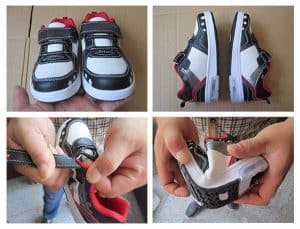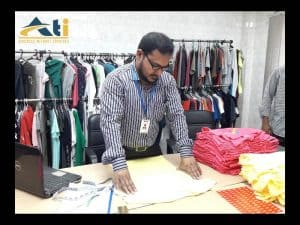Product Inspection
If you have experience in off-shoring production, you would be familiar with how difficult it is to get the products to comply exactly with your requirements and specifications. One way or another, your supplier is likely to introduce some sort of issues into the production process that makes your job as an importer a whole lot complex than just receiving finished products.
In order to make sure that the products are of adequate quality, you should be conducting thorough and frequent product inspections using the services of a 3rd party quality inspection company. This would not only ensure the quality of the products is adequate, but also that the production is on schedule and there are no expected delays.
What is the Objective of Product Inspection Services?
Deciding to carry out product inspection is the best way to make sure that you are kept on board with the quality, quantity, as well as stage of the production process that is ongoing in the factory without being there physically.
Types of Product Inspection
PPI (PPI takes place before start of bulk production, it can assure client about raw material specifications & status)
IPI (Initial product inspection; upon completion of 10~20% order quantity)
DUPRO (During production inspection; upon completion of 40~50% order quantity)
FRI/PSI (Final random inspection; upon completion of 100% order quantity)
CLS (Container loading services; supervising final loading of goods and container sealing)
WHY CHOOSE ATI FOR YOUR PRODUCT INSPECTIONS?
ATI will equip you with a team that has a background in product-specific inspections and thus are able to thoroughly assess the quality of these goods. If you’re looking for a third-party inspection quality inspection company that will keep your best interests in mind and ensures that you receive exactly what you asked for. Our motto is to help you do “Business without surprises”
A Detailed breakdown Of Our Methods of Product Inspection
Even before you actually begin the process of product inspections, there is something that needs to be taken care of: managing expectations. If you do not know what kind of results to expect from your supplier in the first place, then you would not be able to objectively evaluate the quality of the products manufactured. Therefore, both you and your supplier must have their expectations perfectly clear about what the supplier has to produce, and what criteria would be used to examine his products. The following are two vital steps to manage your expectations adequately:
- A golden sample: it is extremely vital for you to receive a golden sample from your supplier prior to mass production of your shipment. Once you have approved the sample, only then should the supplier carry on with the production. This golden sample will act as a benchmark for you to determine the quality of the products that your supplier produces.
- A QC checklist: as mentioned earlier, if you do not make clear to the supplier what you expect the products to be like exactly, including all requirements and specifications, then not only is it difficult for the supplier to fulfill your expectations, but also that you do not have any documented evidence of presenting your demands in details regarding every aspect of the product.
- Clarity between the buyer, supplier, and the inspector: it is highly unlikely that you, being the buyer, will inspect the products yourself. If that is the case, well and good. However, in most circumstances, people hire third-party inspection teams to carry out this task on behalf of you. In this case, you need to introduce both the parties (the inspector and the supplier), so that they can coordinate affairs between themselves. You will also need to let the inspector schedule inspections at the supplier’s convenience because unannounced visits are seen as a disturbance and not appreciated by the supplier.
Examining the Production Status
A vital part of product inspection for any quality inspector is to inquire about the production status. Before even looking at a sample of products for quality, it is important to see how far along the production process has come and compared it to the expected timeline of the project.
This is especially important for the launch status, where inspectors should make sure that the project has started successfully on the pre-decided dates.
If the inspector comes across any information that may indicate a potential delay in the production process or the actual delivery of the products to you, it is his utmost responsibility to immediately report them to you so that you may then consider what potential measures you can take to fix the problem.
The inspector should also frequently visit the production site and examine the finished goods, their number, packaging, and overall quality. if, for example, the inspector finds the quality to differ significantly from the approved samples, then adequate measures shall be taken by the supplier to ensure consistent quality across all units produced. It is also important for the inspector to look at the general conditions around the site, such as storage, organization and overall safety conditions.
Random Sampling
Unless your product requires 100% inspection due to some special reason, in most cases it is often unlikely that you will inspect each product in a shipment. Instead, you are likely to choose a statistically significant number of products in your sample that will adequately represent the quality of the entire batch.
The following are the suggested steps that the inspector should go through for carrying out a successful random sampling:
- For every SKU that you wish to inspect, calculate the square root of the total number of cartons packed by the supplier.
- Round this number up to the nearest whole number.
- Pull out cartons from various parts of the shipment: you must not pull out cartons for inspection from only one part eg the front or one side.
- Set aside an even number of samples from every carton that you have selected in order to reach your sample size.
Product Inspection Process
Once the inspector has successfully set aside sample for product inspection, the actual inspection process will begin. It is common to find different protocols and procedures used by experienced professionals for product inspection. The basic aim of these different procedures would be to carry out the following:
– Checking Packaging Details
The inspector will usually carry out a number of packaging tests designed to test the durability and longevity of the packaging. In addition to these tests the inspectors should examine the following features of the packaging details:
- markings, artwork, and dimensions: the product inspection team should make sure that the markings, artwork, and dimensions of the final finished products in the sample conform to those in the approved golden sample. Any irregularity should be noted down and reported to the buyer.
- In case any referencing regarding the color tone is not provided, inspectors usually make use of a Pantone color swatch.
- The inspectors should also make sure that the product bar-codes are scan-able and consistent so that the buyer does not encounter any issues while receiving and sorting these packages.
- It is also recommended to measure and weigh the packaging to make sure that it is of adequate quality and can withstand traveling along with long distances.
– Visual Product Inspection Services and Dimensions
Once the packaging has been approved by the inspectors, the next step will be to examine the products visually and make sure that there are no defects in the products visually. This is important for most classes of goods, especially consumer goods where appearance contributes immensely in the consumer buying decision.
The following are specific features that should be inspected at this stage:
- appearance and dimensions: these should be compared with the approved golden sample and any product that does not conform to the specifications should be set aside for rework.
- The inspectors should make sure that all necessary accessories are attached and in proper shape.
- It is recommended to inspect an even number of units from each carton so that most of the batch is represented in the sample.
- Once the products have been compared to the approved sample, they pass this stage of inspection.
- Make sure to mark out non-compliant or defective items.
- The inspection team must ensure that the factory staff does not interfere with the sample or try to temper with the defected goods in any manner.
- These steps will help you make sure that product dimensions are in-line with buyer instructions.
– On-Site Testing
On-site testing is one of the most efficient sets of tests conducted on a sample to ensure its quality. there are a large number of on-site tests available, depending upon the type of product under inspection.
- Hi-Pot Test: This is used for products that are supposed to have insulating properties.
- Carton Drop Test: This ensures that the product will be able to withstand any falls or pressure during transit, without being damaged or defective.
- Specialized Tests: These tests depend specifically on the type of product and are designed by keeping the specific requirements of the product in mind. Quality inspectors will usually discuss these tests with the buyer and other concerned individuals.
- Function testing tests according to product type, to ensure that the products are fit for their purpose.
- It is very important that the factory staff should be cooperative, otherwise the on-site tests cannot be carried out with efficiency.
–Reviewing and Drafting the Defects
Finally, it is important to review and draft the results for optimal results.
The following tips help the inspectors in achieving most out of their Product inspection:
- Photographic evidence of any defective products found
- Initial inspection results should contain every significant detail so that a corrective action plan can be decided.
- The final report should be sent to both the supplier as well as the buyer
- The buyer will review the report and get input from the factory staff
- In case of any disagreement from the staff, the inspector should be available to answer all concerns.
- The inspector should also be able to provide valuable input and suggestions in case any defects are found in the products or the production process.






